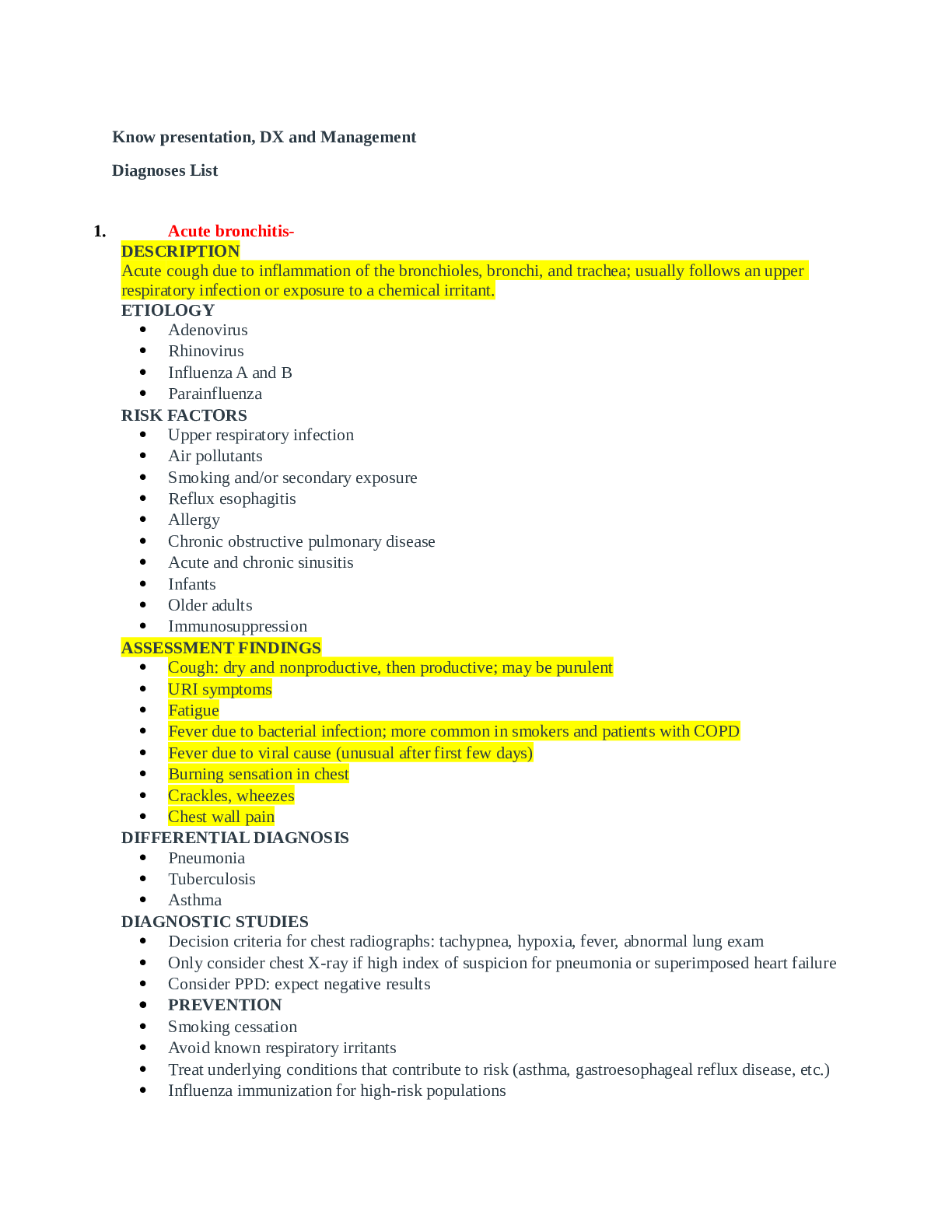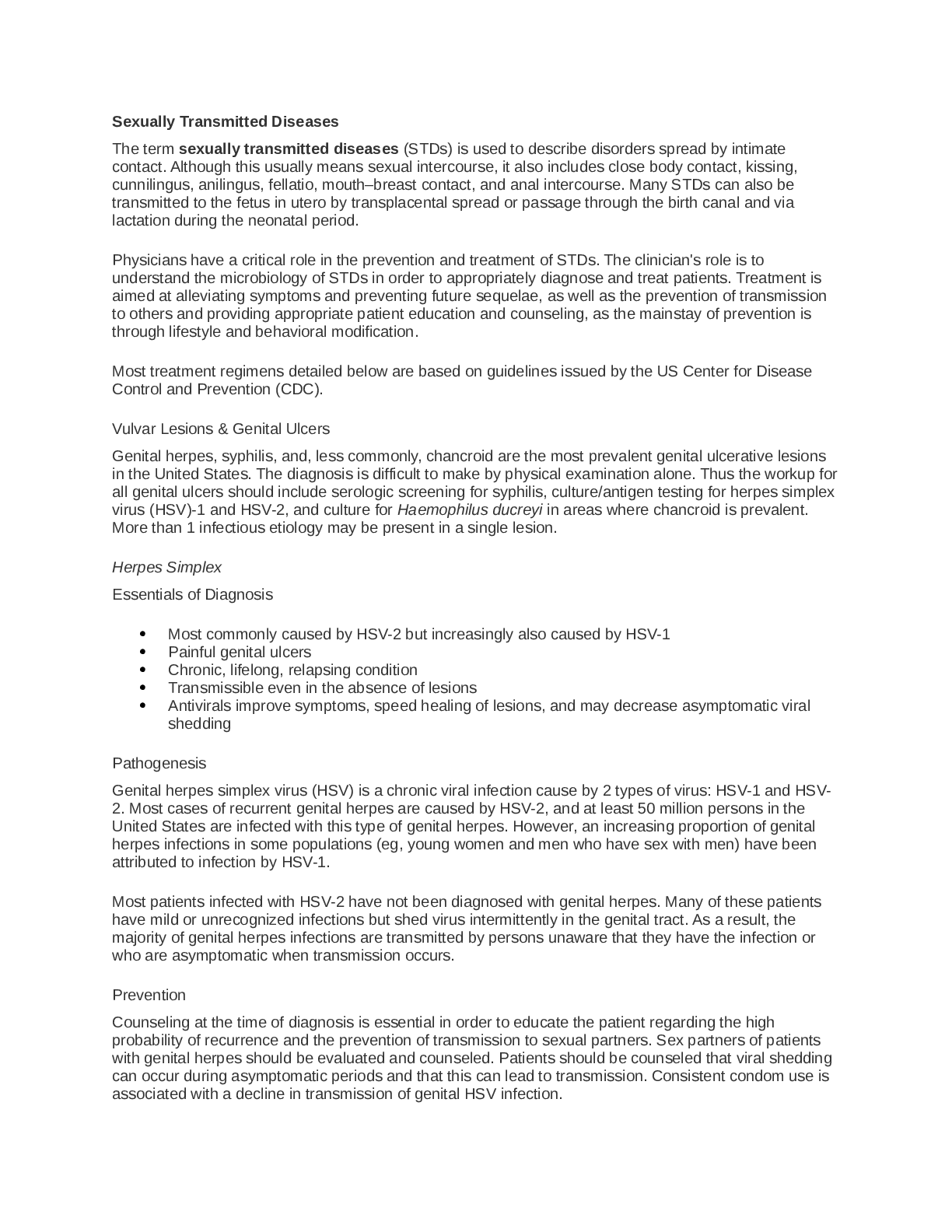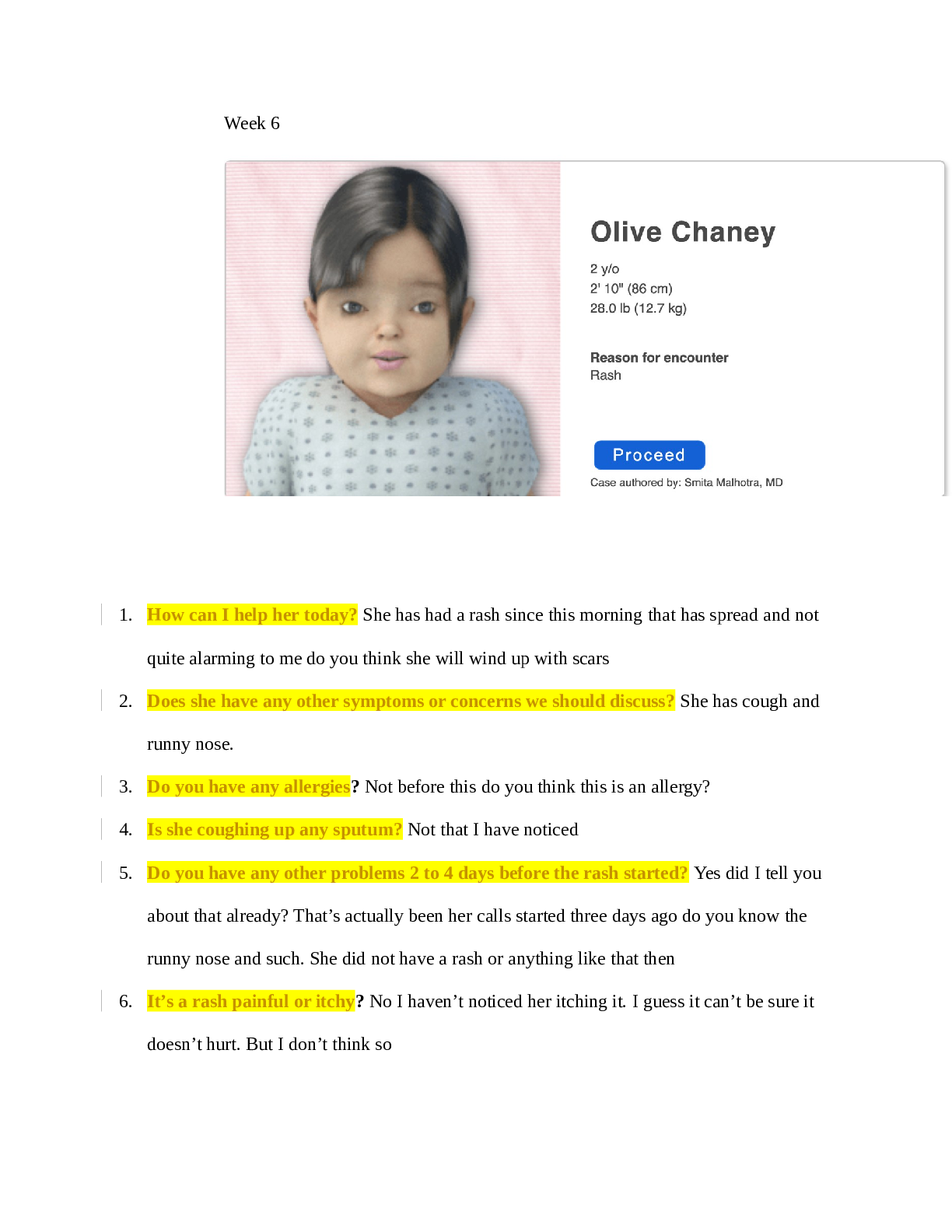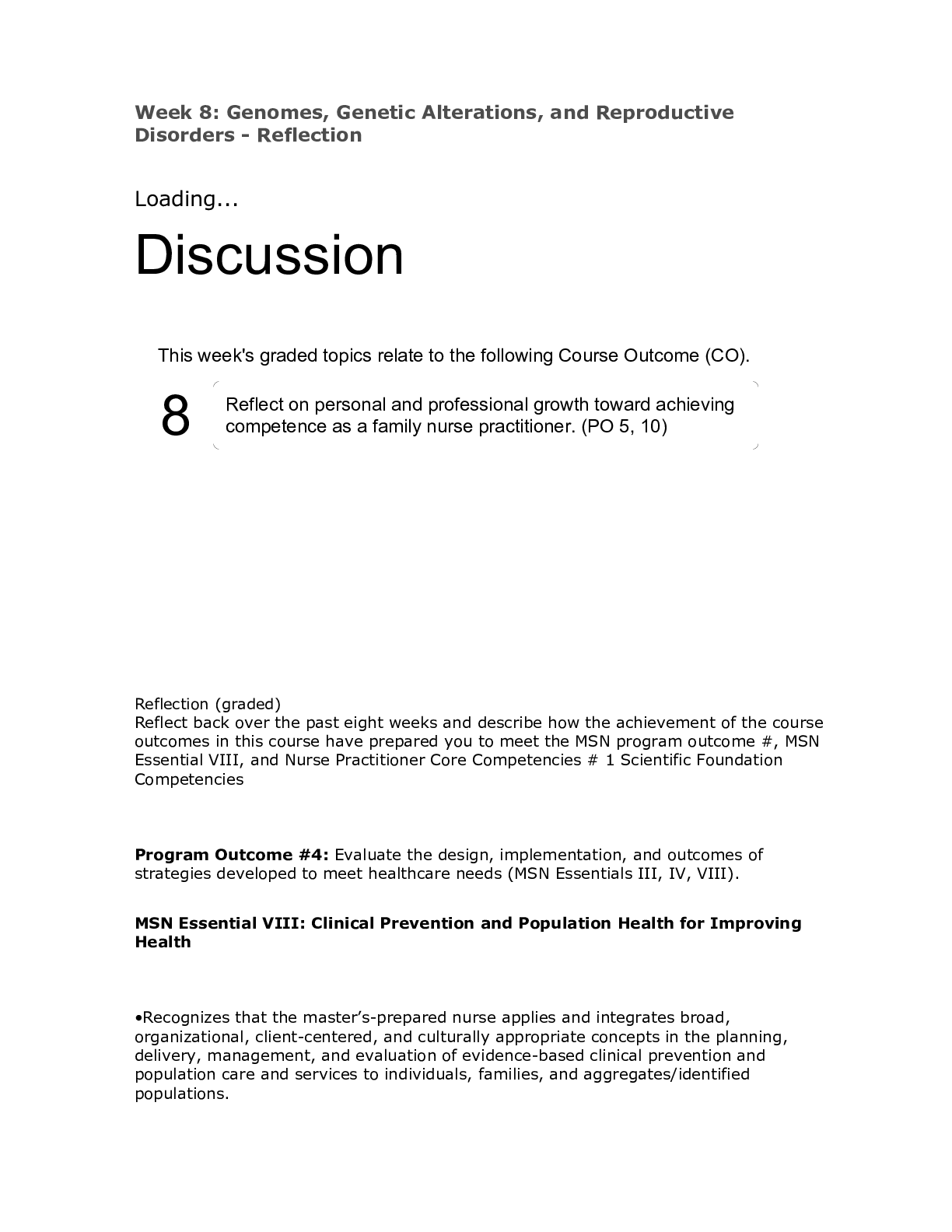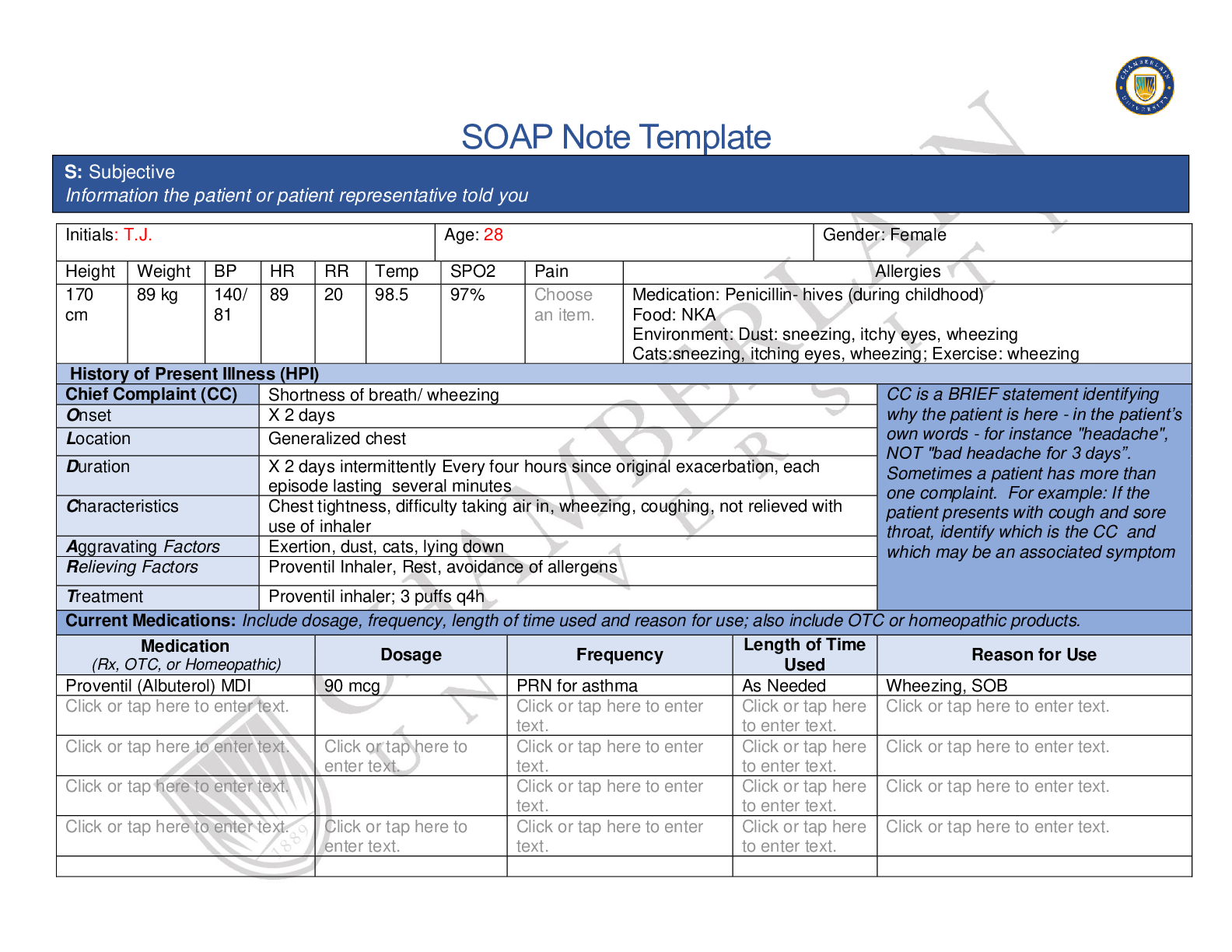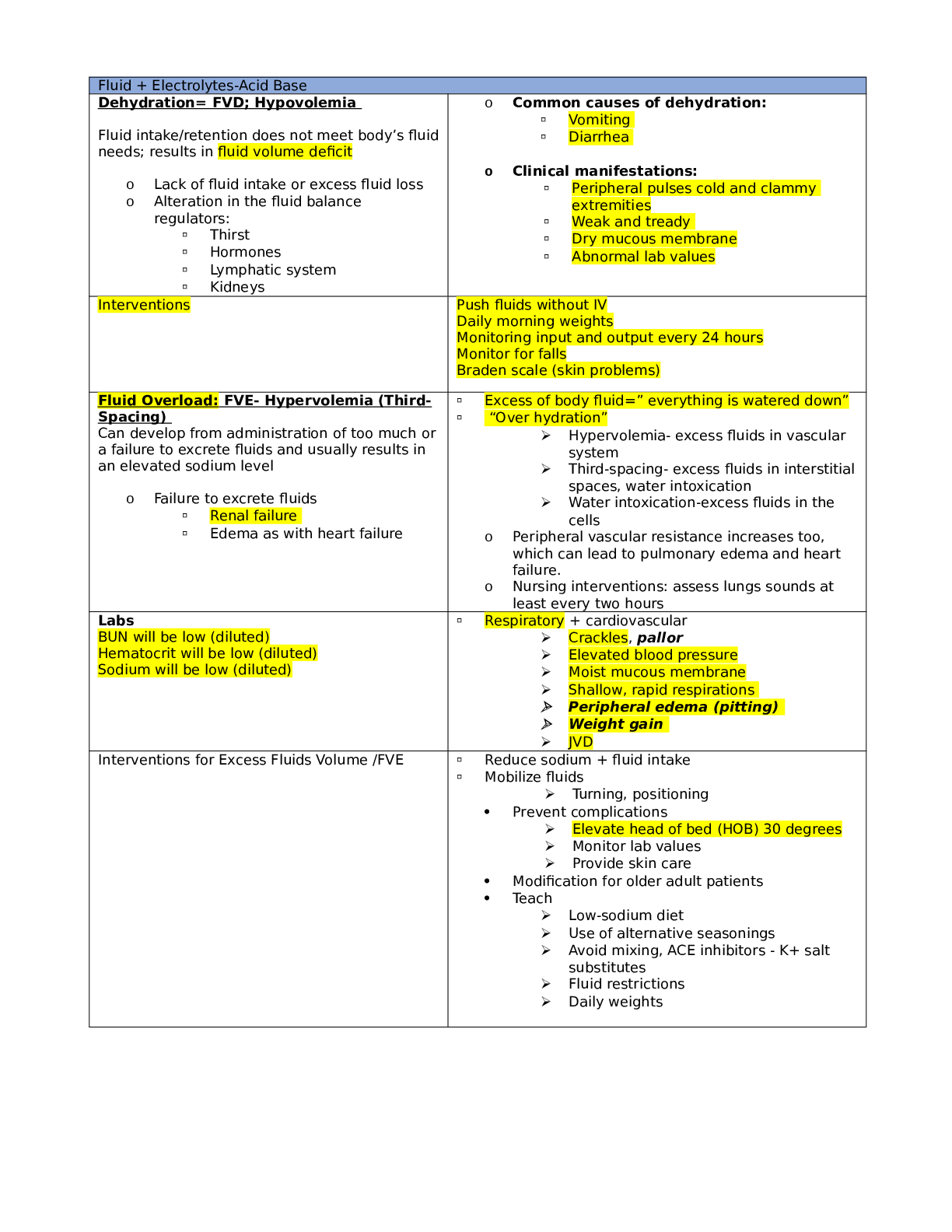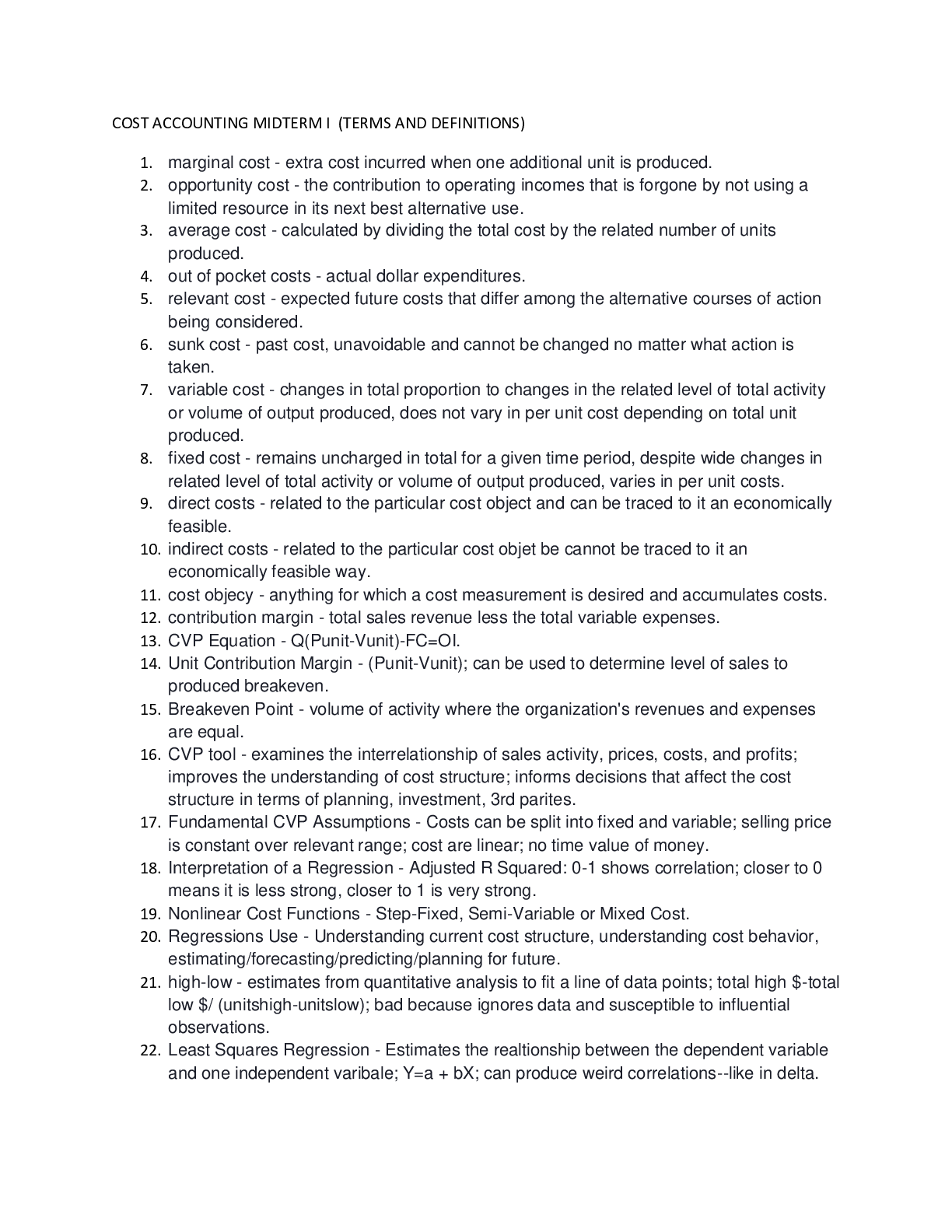*NURSING > Class Notes > Chamberlain College of Nursing - NR 507/NR 507 week 4 notes-Alterations in renal and urinary functio (All)
Chamberlain College of Nursing - NR 507/NR 507 week 4 notes-Alterations in renal and urinary function.
Document Content and Description Below
Alterations in renal and urinary function Structures of the renal system o kidneys paired organs located in the posterior region of the abdominal cavity behind the peritoneum right ki... dney slightly lower than the left and displace towered by the overlying liver the renal capsule surrounds each kidney and the kidney is embedded in a mass of fat the capsule and fatty layer are covered with a double layer of renal fascia compose the fibrous tissues that attach the kidney to the posterior abdominal wall the cushion of fat and the position of the kidney between the abdominal organs and muscles of the back protected from trauma hilum-medial indentation in the kidney and is the location of entry and exit for the renal blood vessels, nerves, lymphatic vessels, and ureter. Structures of kidney: Cortex-outer layer; contains glomeruli, most proximal tubules, and some segments of the distal tubule renal columns-extension of the cortex; lie between the pyramids an extend to the renal pelvis Medulla-inner part of the kidney; consists of the pyramids minor calyces (Cup shaped cavities)-apexes of the pyramids project into these major calyces-minor calyces unite to form these Join to form the renal pelvis renal pelvis-connects with the proximal end of the ureter lobe-the structural unit of the kidney each lobe is composed of a pyramid and overlying cortex about 14 lobes in each kidney nephron-functional unit of the kidney each kidney contains about 1.2 million nephrons the renal corpuscle bowman capsule glomerulus proximal convoluted tubule loop of Henle (nephron ansa) distal convoluted tubule collecting duct all of these contribute to the formation of urine the different epithelial cells lining various segments of the tubule facilitate the special functions of reabsorption and secretion three kinds of nephrons: superficial cortical nephrons (85%)-extend partially into the medulla midcortical nephrons with short or long loops juxtamedullary nephrons-like close to an extend deep into the medulla; important for the concentration of urine glomerulus-Tuft of capillaries that loop into the circular Bowman capsule Like fingers pushed into bread dough Bowman capsule-comprised of a visceral epithelium (visceral layer) forming podocytes Parietal epithelium (parietal layer) Mesangial cells (shaped like smooth muscle cells)- Contract like smooth muscle cells to regulate glomerular capillary blood flow; have phagocytic properties similar to monocytes and release inflammatory cytokines and growth factors Mesangial matrix (type of connective tissue)-secreted by mesangial cells; lie between and support the glomerular capillaries Renal Corpuscule-glomerulus, Bowman Capsule, and mesangial cells [Show More]
Last updated: 1 year ago
Preview 1 out of 21 pages
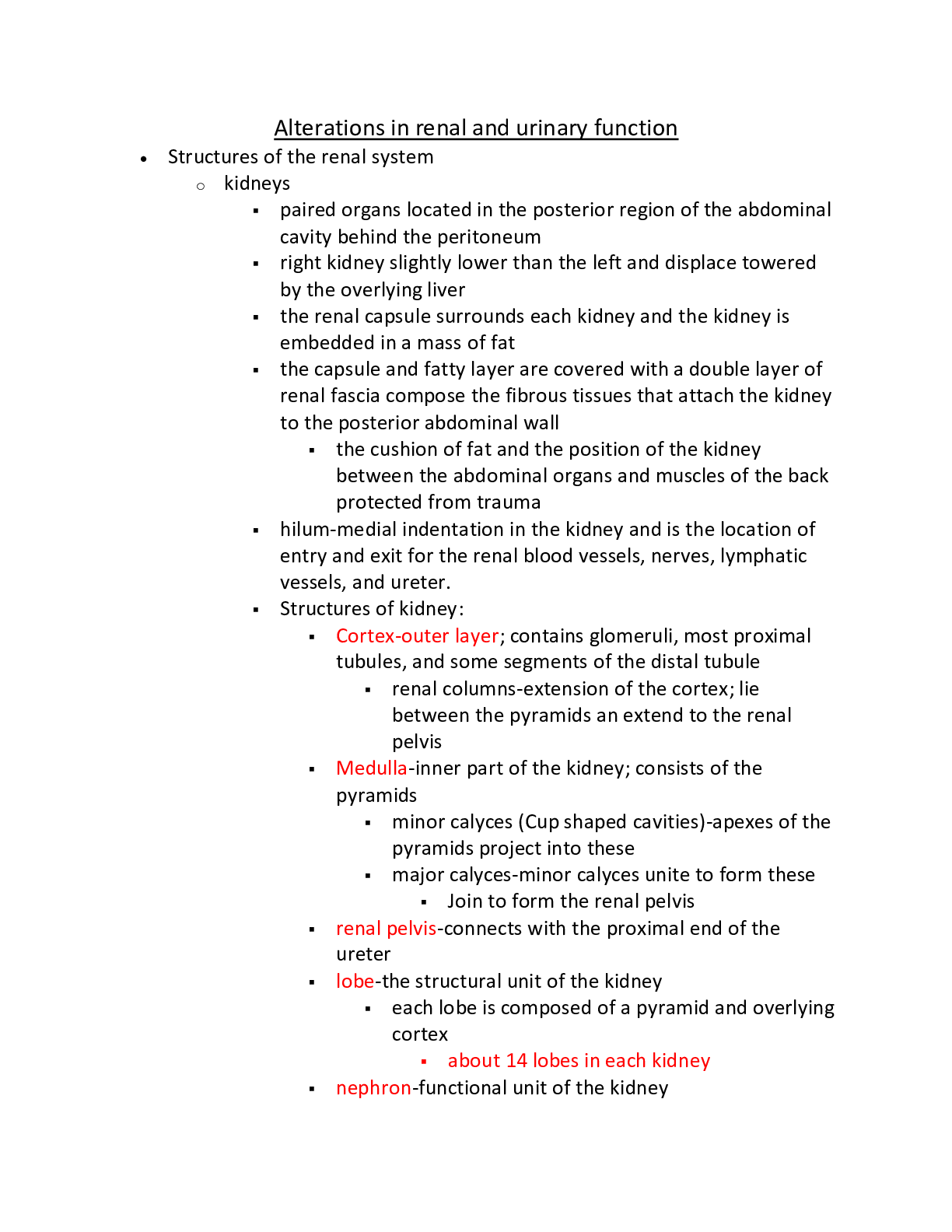
Reviews( 0 )
Document information
Connected school, study & course
About the document
Uploaded On
Jan 20, 2021
Number of pages
21
Written in
Additional information
This document has been written for:
Uploaded
Jan 20, 2021
Downloads
0
Views
47




